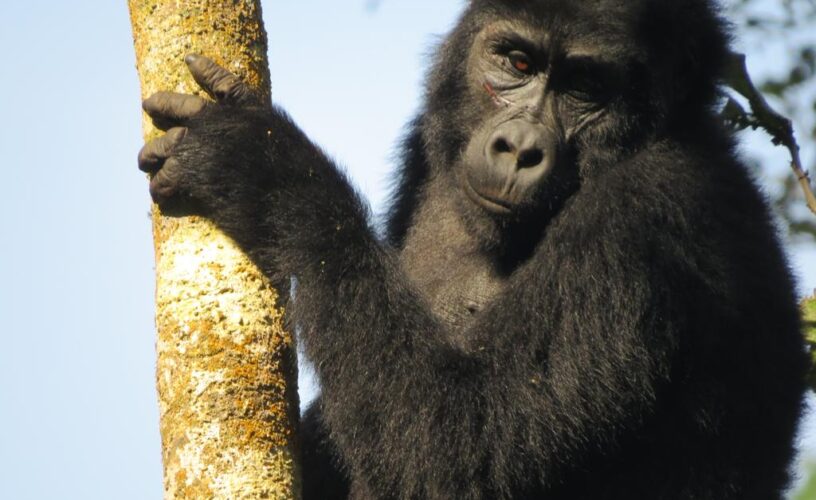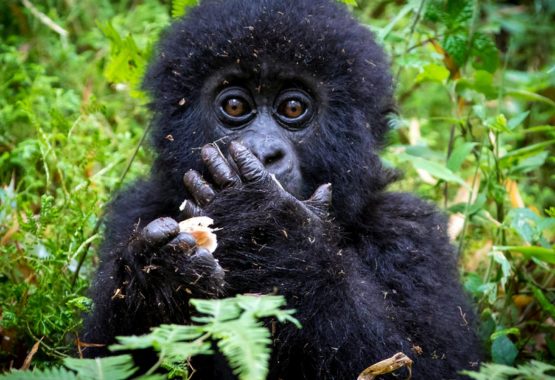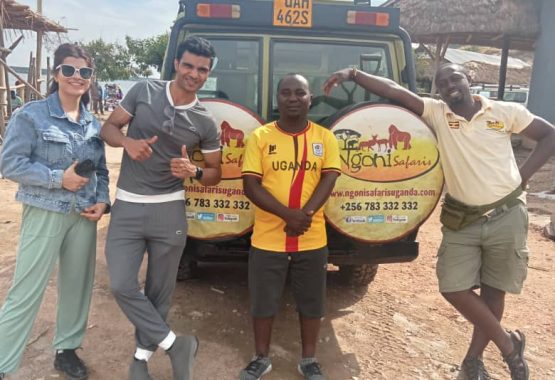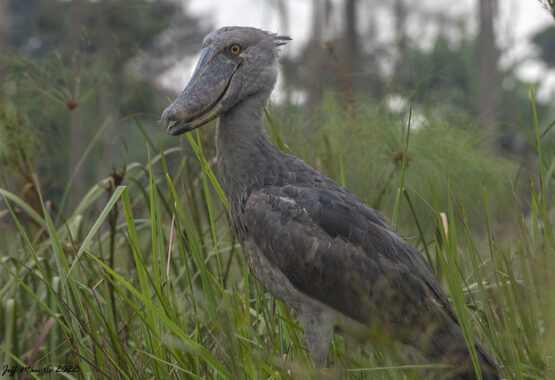Mountain gorillas can only survive in the wild, so trekking into their native forests is your only chance to catch a peek.
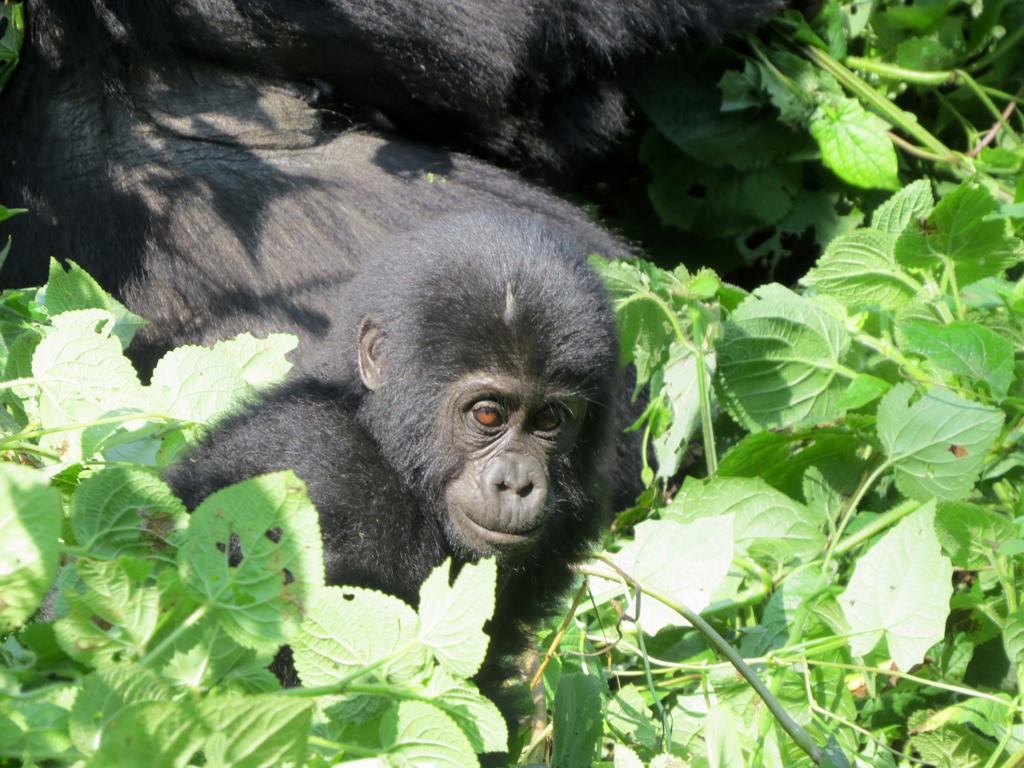
Sitting in silence on the cold ground of a for 60 minutes might be one of life’s greatest privileges. There are fewer than 900 mountain gorillas in existence, and gorilla trekking provides a rare opportunity to observe the everyday interactions of these gentle, mysterious primates.
In 1981, environmentalists estimated there were only 254 mountain gorillas left in the world, but the small population is rising slowly thanks to intense international conservation efforts. Since these critically endangered creatures can’t survive in captivity, the only way to see them is by trekking up to their natural habitat: misty cloud forests that can reach altitudes of 14,763 feet.
Here are 5 reasons to make Uganda your base for this incredible journey.
YOU’LL BE WHERE HALF THE WORLD’S MOUNTAIN GORILLAS LIVE.
There are two gorilla trekking spots in Uganda: Bwindi Impenetrable Forest National Park and Mgahinga Gorilla National Park. Gorillas don’t pay mind to political borders, so populations across the Virungas are relatively fluid. Uganda has an edge, however, since Bwindi alone is home to half of the world’s mountain gorillas.
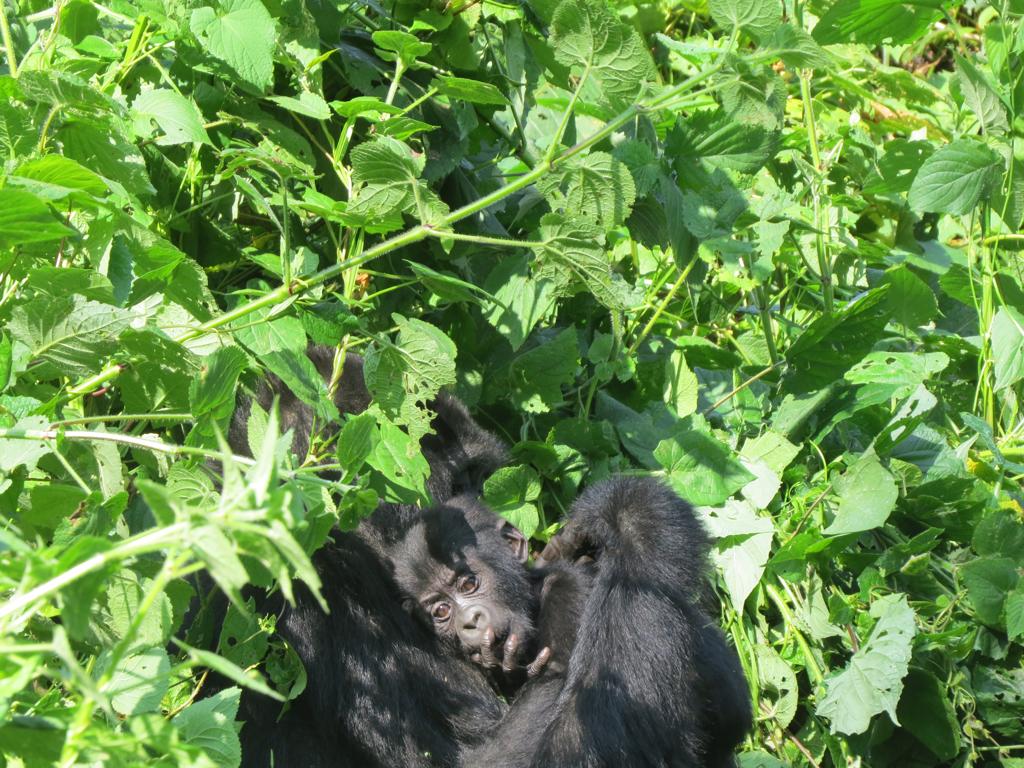
Bwindi Impenetrable Forest National Park (also called “The Place of Darkness” due to its dense treetops) is an ancient, montane and lowland forest spanning 128 square miles. The region was named a UNESCO World Heritage site thanks to its incredible biodiversity and the large number of endangered species that call it home.
Mgahinga Gorilla National Park accounts for 13 square miles of the larger Virunga habitat, which stretches across 168 square miles into Rwanda and the Democratic Republic of the Congo. The national park includes three of the eight major Virunga peaks: Mount Gahinga, Mount Muhabura and Mount Sabyinyo.

YOU’LL FIND MORE AFFORDABLE TREKKING PERMITS.
There are strict regulations in place to make sure the gorillas stay healthy and wild—starting with the gorilla trekking permit process. Daily viewings of each gorilla group are extremely limited, so visitors should apply well before their desired dates.
In Uganda, permit costs vary depending on the season. In April, May and November, permits are $450. The rest of the year, they cost $600. In contrast, permits in Rwanda now cost $1,500 year-round.
Most trekking in Uganda takes place in Bwindi, where there are multiple starting points and several gorilla families to track. Visits are led by park rangers and groups of eight are allowed to observe the gorillas for one hour, in silence and at a safe distance.
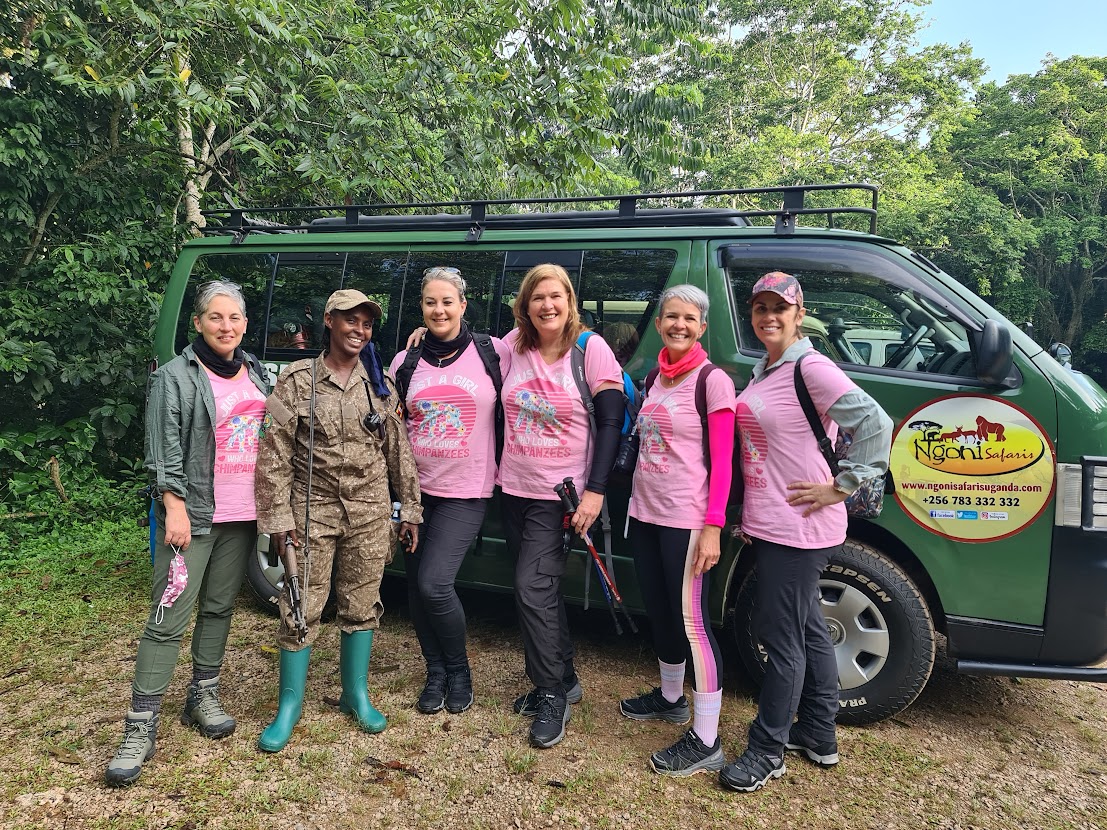
YOU CAN TAKE ON CHALLENGING TERRAIN.
One look at southwestern Uganda’s green terraced hills and rolling volcanic slopes and it’s clear this area of the country is not for the faint of heart. Add in the high altitude and the challenging terrain, and gorilla trekking in Uganda promises to be the adventure of a lifetime.
It’s hard work to reach the gorillas. It requires navigating uphill and downhill through thick tangles of vines, thorns, and roots. The appropriately named Bwindi Impenetrable Forest National Park is only accessible by foot. There are no paths, no signs, no directions—and more often than not, no clearings (which is why the park rangers carry machetes). The good news? The reward seems that much better after all of the hard work.
OTHER PRIMATES WILL INEVITABLY CROSS YOUR PATH.
Uganda is a primate-lover’s dream. In addition to mountain gorillas, Mgahinga is home to another endangered species: the golden monkey. These furry, comical monkeys live high up in bamboo forests. Tracking golden monkeys is very similar to tracking gorillas, but the trek itself is not quite as challenging.
Further afield, Bwindi has L’hoest monkeys, gray-cheeked mangabeys, and blue monkeys. In Kibale Forest National Park, chimpanzees steal the show. Patas monkeys roam around Murchison Falls National Park. Queen Elizabeth National Park has blue monkeys and red-tailed monkeys (not to mention non-primates, like lions and elephants).

